Personalized Content Is The New Standard. Here Are 4 Ways To Get Started

Personalized content is a method of tailoring digital content to an individual reader based on the data a company has gathered on them. Personalizing content enables businesses to speak to a reader in relevant terms and show them content they’d be interested in.
Personalization is everywhere. Netflix recommends videos based on your watch history. Amazon’s homepage shows recently viewed products and ones you might be interested in based on your purchase history. Your social media feeds are curated based on the accounts and topics you interact with.
Personalization is becoming essential across industries as all tech leaders believe that personalized content is important, and 79 percent of them rate it as a moderate priority or higher, according to a recent survey by Optimizely.
Companies that personalize their content see the impact. For example, personalized website CTAs have a 202 percent higher conversion rate than standard CTAs, according to HubSpot. And Salesloft found that personalized sales emails lead to double the reply rate.
Personalized content is the path toward more signups, better lead quality, and more revenue. And with a large majority of companies prioritizing it, it’s no longer a nice-to-have but a need-to-have for brands that are going to compete. Put the customer data you’re collecting to use to create relevant experiences in every interaction.
Why is content personalization important?
Content personalization means better business. By using personalized experiences in your content marketing strategy, you can foster relationships with your audience at every stage of the funnel. Overall, it means your marketing spend is more efficient.
Acquire more leads
Custom content shows your readers that you understand them and implies that you can solve their problems. So, you increase your chances of getting them to subscribe, sign up, or take a demo.
For example, if your company provides software that’s useful for multiple industries, customize your homepage to an audience member’s industry. Use imagery that suits their field, copy that feels familiar, and feature use cases that match their day-to-day.
Increase engagement
Well-crafted content is a waste if it’s seen by the wrong person. Personalized content means you show readers what they’re most likely to engage with.
For example, if your company sells social media software that suits multiple industries, you might personalize your blog’s landing page depending on who’s viewing the content.
You can show ecommerce customers tips for setting up their Instagram shop. Readers who own restaurants can be shown a case study of another business using social media to attract local customers. And tech startups will see tips for working with influencers when you don’t have a physical product to show.
Win more customers
Serving relevant content to your audience means they’re more likely to become customers and refer others.
So a potential customer who has visited your site multiple times and watched a product demo could be served an ad that encourages customers at the bottom of the funnel to take the next step, like signing up for your free trial.
Improve loyalty
According to Optimizely’s report, 56 percent of businesses say that an increase in customer satisfaction is the biggest impact personalization has had on their business. Delivering relevant content to your prospects and customers shows them that you understand them. It shows you’re a trusted partner for their work and increases the likelihood that they’ll stick around.
Say you sell a real estate management product and some of your prospects are residential agents based in Seattle. You can nurture those relationships by sending them an email with your quarterly housing market reports for that city.
What are some examples of personalized content?
It’s worth personalizing content wherever you interact with customers—not just on your blog and in emails. To get you started, here are four examples of personalized content that successful businesses use to connect with their audiences.
1. Website content
One common way to personalize content is on your website.
B2B finance technology company Brex saw a 29 percent increase in completed applications after personalizing its homepage by industry.
Here’s what Brex’s homepage looks like for website visitors in the Life Sciences field:
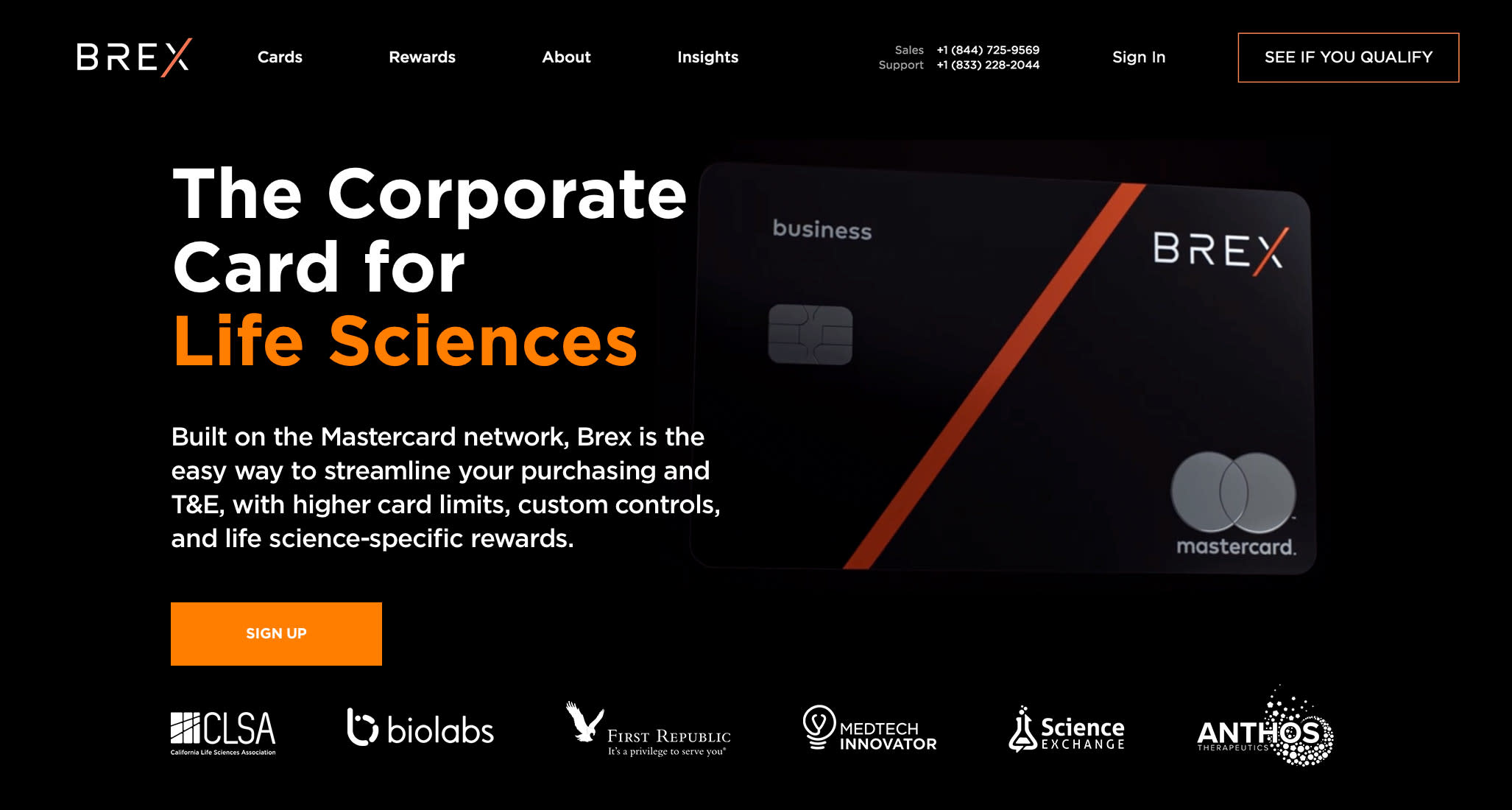
And here’s what it looks like if a site visitor is in the ecommerce industry:
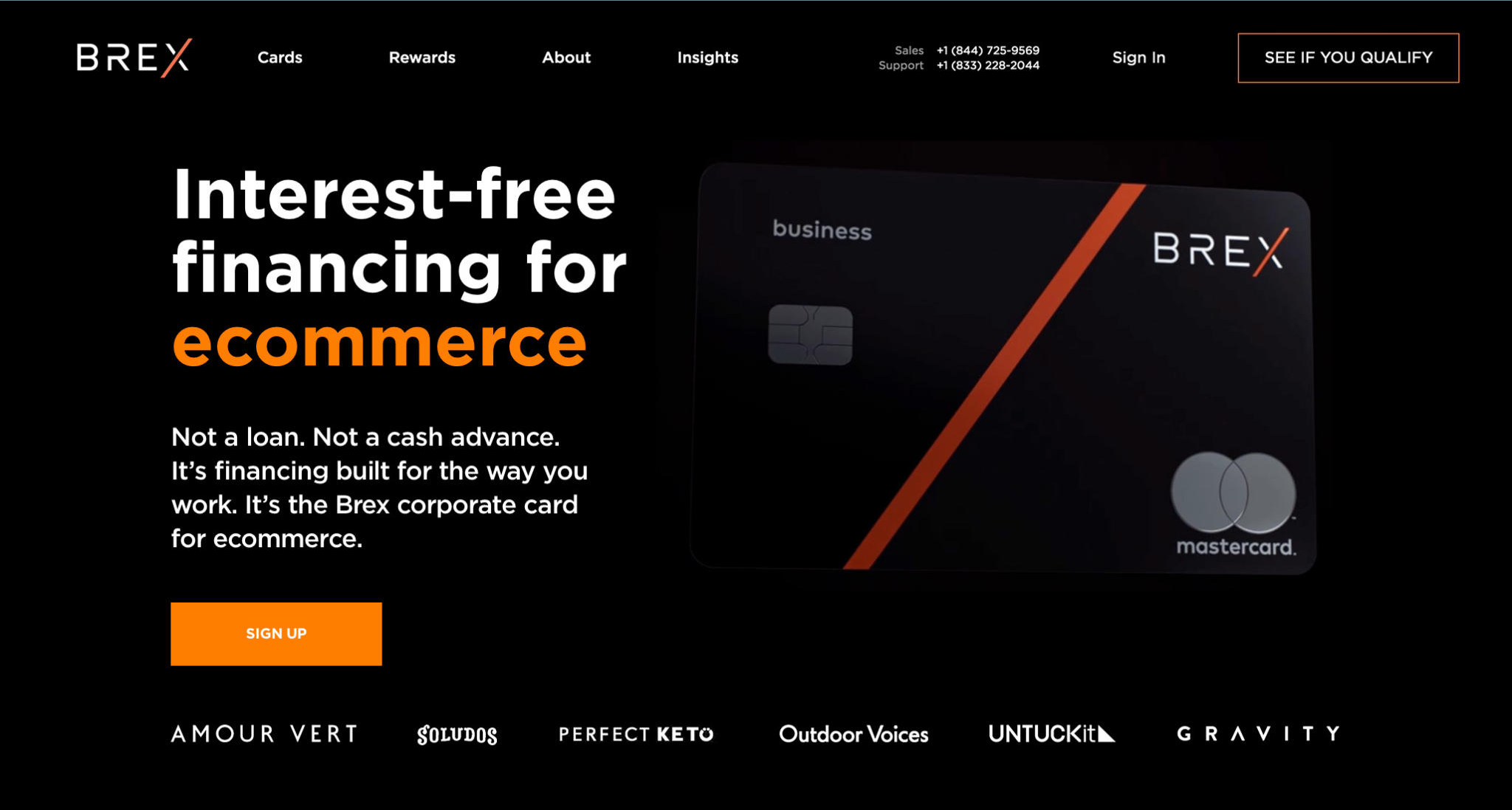
Same product; different messaging that resonates with who’s viewing it.
2. Article recommendations
Relying on trending content alone to promote reader engagement is a thing of the past. Instead, show readers articles they will be interested in based on their history.
Parse.ly’s personalized content recommendations are ideal for getting the right articles in front of audience members. Recommendations can take the form of tiles at the end of an article, a curated newsletter, or in Slate’s case, infinite scroll.
Slate used Parse.ly’s recommended content API to create an infinite scroll experience that automatically shows an article that’s relevant to the reader when they get to the bottom of another.
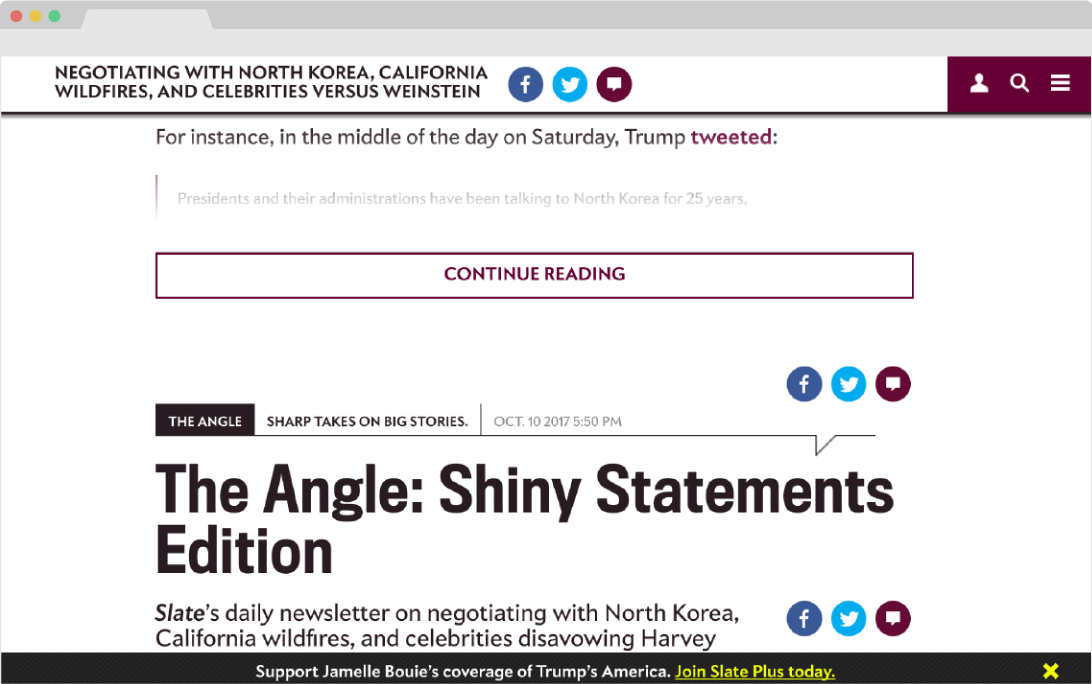
Since adopting personalized content and infinite scroll, Slate has seen an 8.5 percent increase in engaged time.

3. Retargeting ads
HR software company Zenefits sees higher ad conversion rates when it targets the right people with the right content.
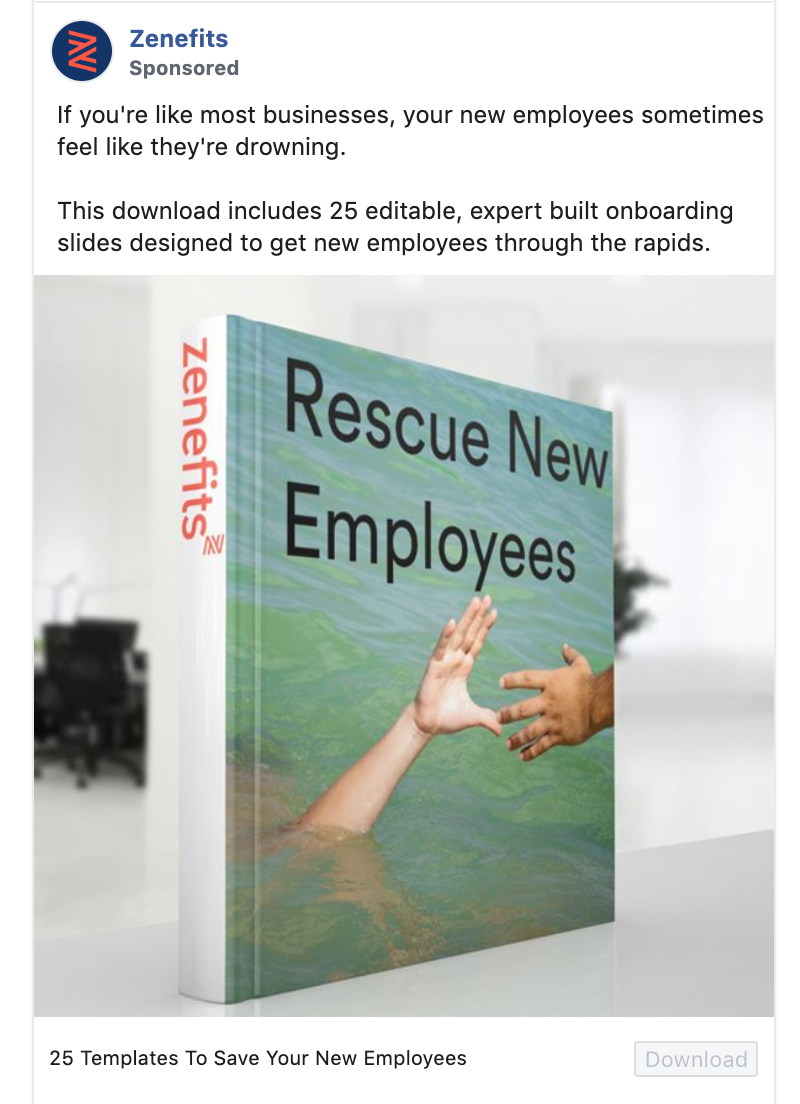
This ad can go to HR professionals with new staff. And Zenefits can save the cost of sending it to people who wouldn’t be interested.
4. Emails
Companies can’t get by on a single newsletter or welcome flow that they send to every subscriber anymore. Inboxes are full, and you need to show readers relevant content to keep them from hitting “unsubscribe.”
To personalize your email marketing efforts, use customer data to suggest relevant articles. Bring email subscribers further down the sales funnel with content relevant to their funnel stage. And use email automations to communicate with customers based on actions they’ve taken on your website recently, like viewing your pricing page or updating their account information.
Here Clearbit shows two welcome emails that it uses to nurture new customers in different audience segments. One goes to marketers, and the other goes to developers.
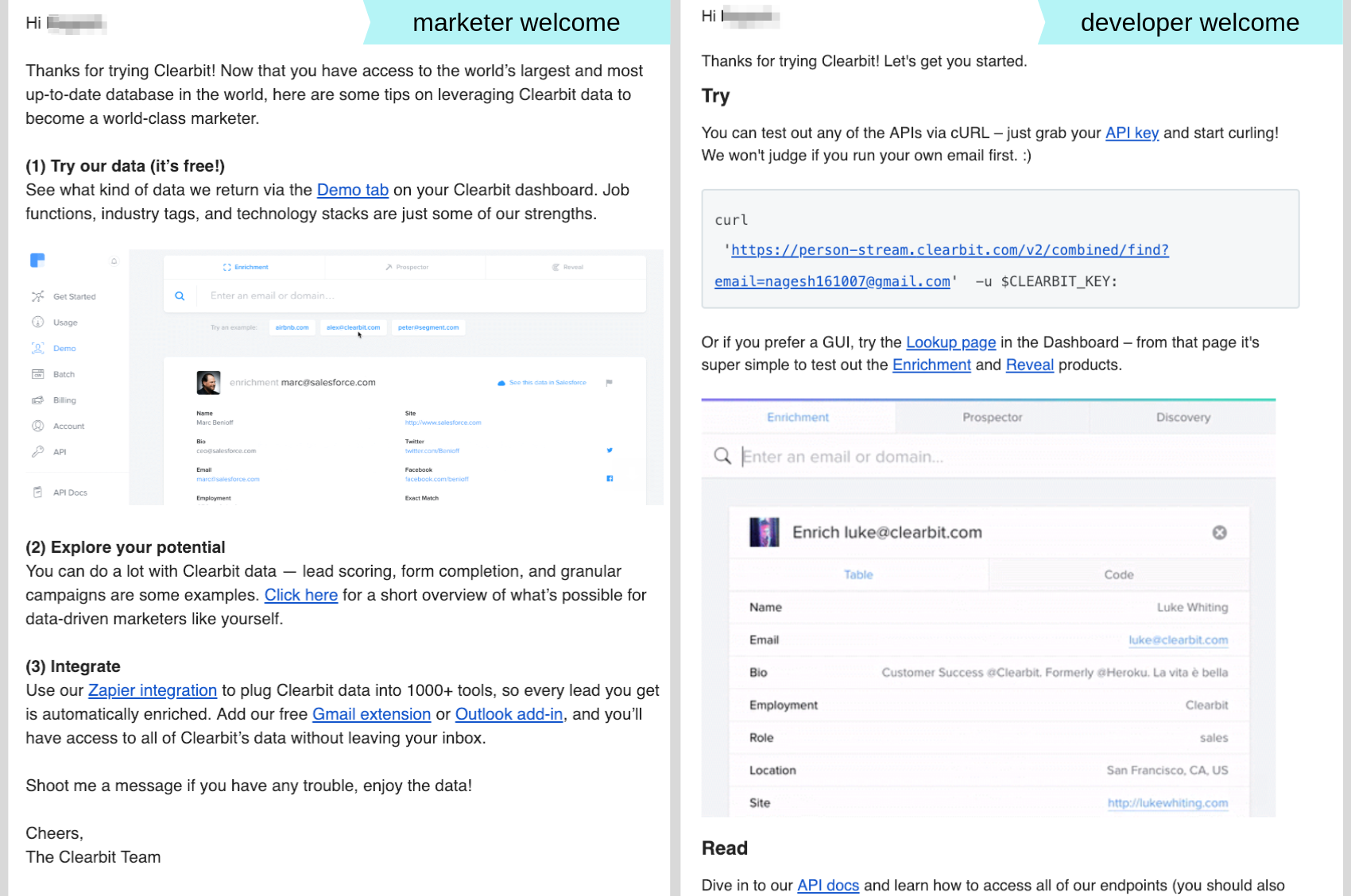
The emails give new users helpful Clearbit onboarding information relevant to their roles.
The time to connect to customers with personalized content is now
Launch a personalization strategy so you don’t get left behind. If you’re ready to create better customer experiences, start with Parse.ly’s content recommendation engine.
Create engaging user experiences by surfacing relevant content based on audience behavior, demographics, trending content, and more. Parse.ly’s algorithm uses real-time analysis to predict what a reader will want to read next. It works on your website, apps, and newsletters so you can curate readers’ experiences wherever you interact with them.
Ready to get started?